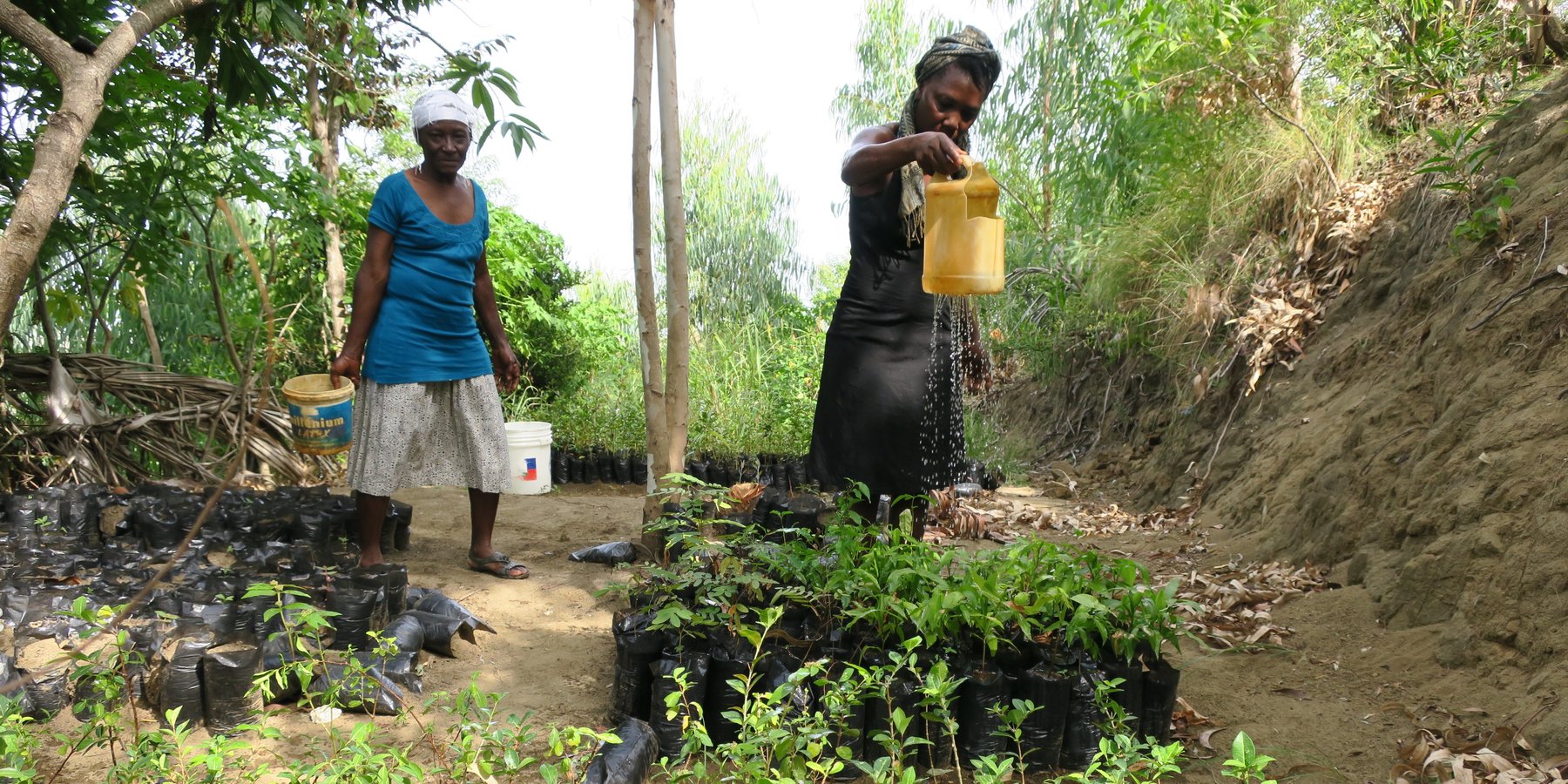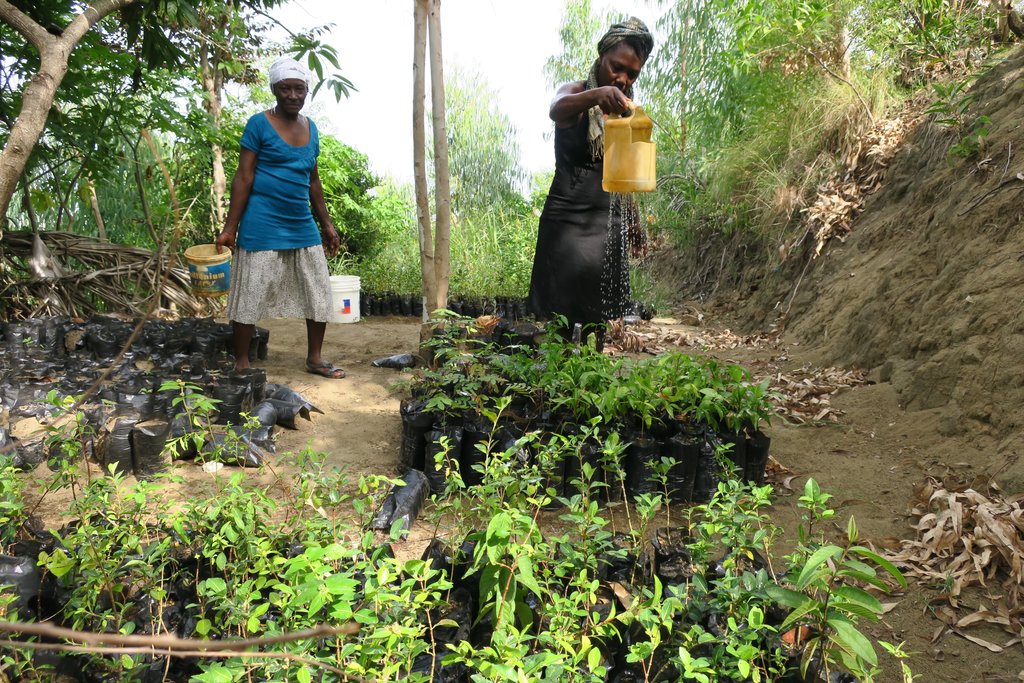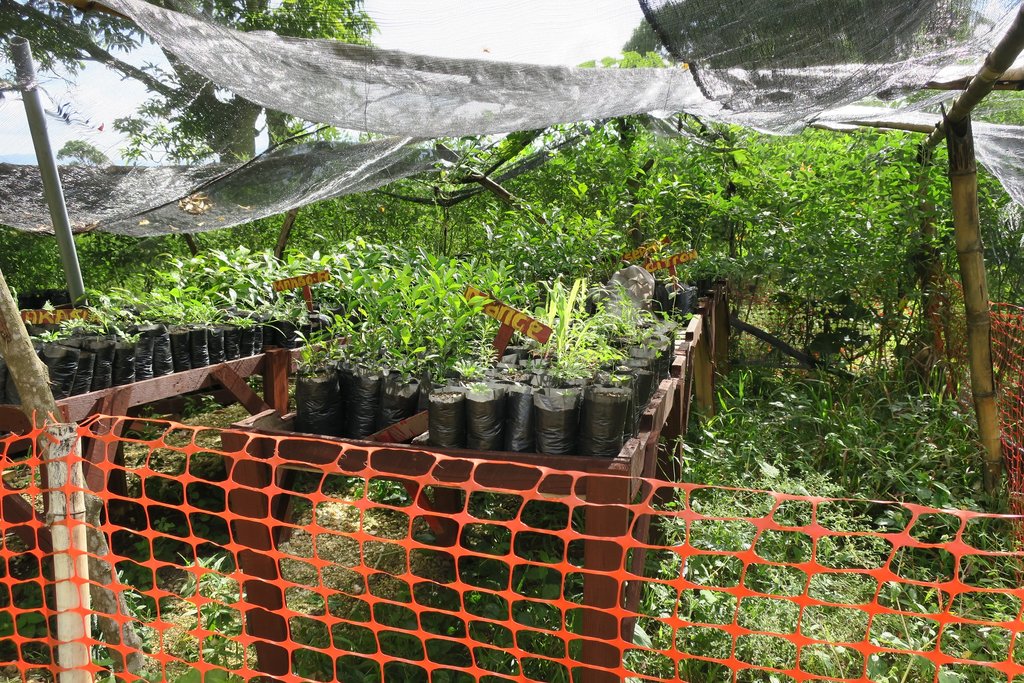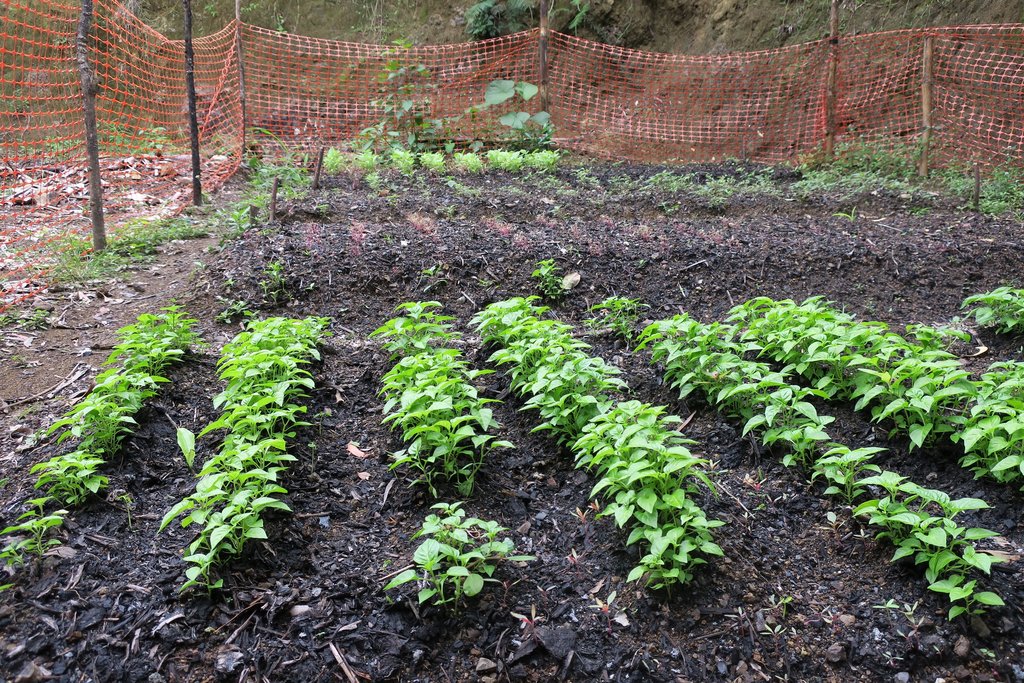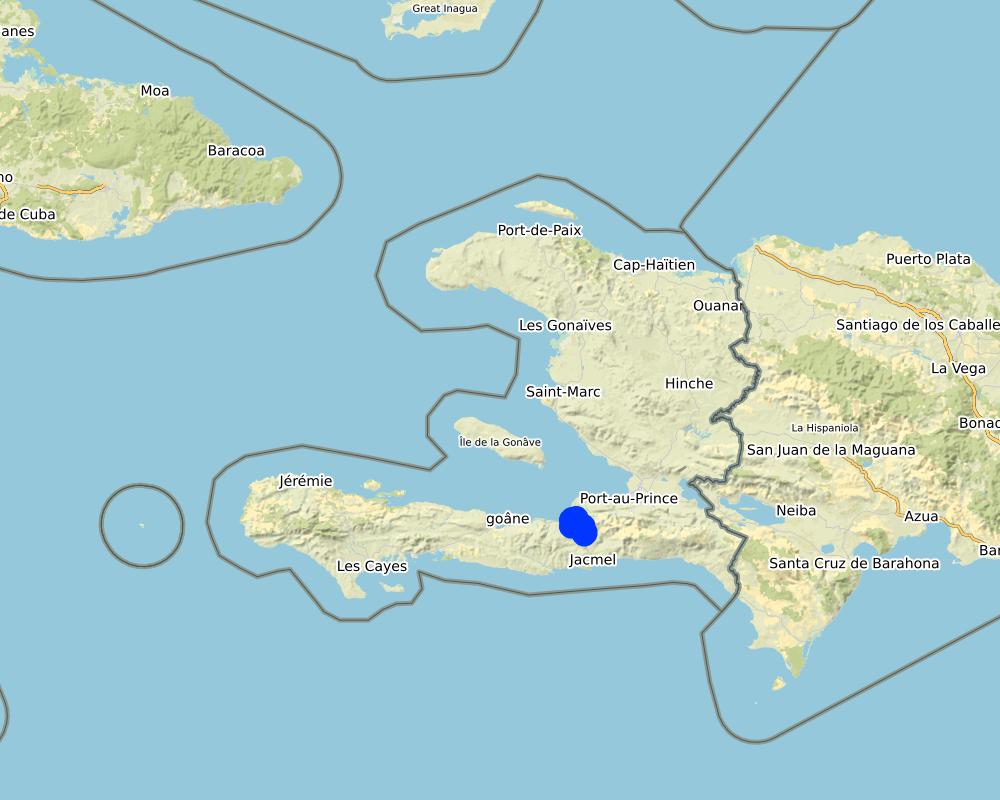Afforestation [Haiti]
- Creation:
- Update:
- Compiler: Joana Eichenberger
- Editors: Hanspeter Liniger, Jean Carls Dessin
- Reviewer: Hanspeter Liniger
Afforestation
approaches_3284 - Haiti
View sections
Expand all Collapse all1. General information
1.2 Contact details of resource persons and institutions involved in the assessment and documentation of the Approach
Key resource person(s)
Technicien agroecologie:
Jeune Loius
Crois Rouge Suisse
Haiti
Name of project which facilitated the documentation/ evaluation of the Approach (if relevant)
Onsite and Offsite Benefits of SLMName of the institution(s) which facilitated the documentation/ evaluation of the Approach (if relevant)
Swiss Red Cross (Swiss Red Cross) - Switzerland1.3 Conditions regarding the use of data documented through WOCAT
When were the data compiled (in the field)?
23/11/2017
The compiler and key resource person(s) accept the conditions regarding the use of data documented through WOCAT:
Yes
1.4 Reference(s) to Questionnaire(s) on SLM Technologies

Afforestation of arable land [Hungary]
Afforestation is planting trees on previously non-forested land. Trees hold the soil and reduce runoff, and thus prevent erosion of the most fertile layers. It is an effective way to rehabilitate degraded lands, being a nature-based solution which addresses flood and soil erosion impacts.
- Compiler: Brigitta Szabó
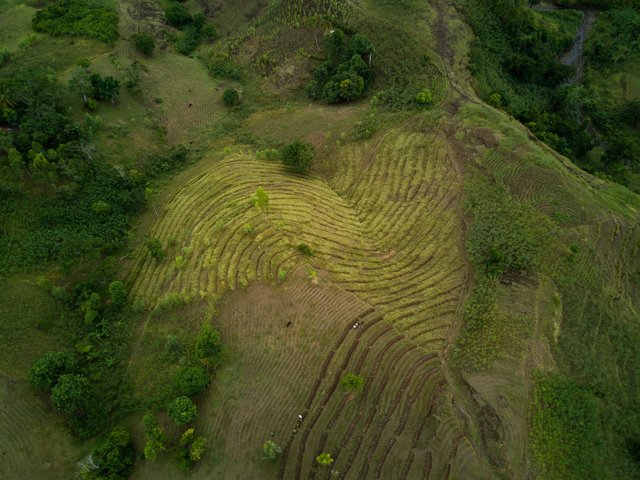
Progressive bench terraces formed by a vetiver hedge … [Haiti]
Progressive terracing technology is established through successive deposits of sediments behind (upstream) any anti-erosional structure, in this case contour strips of vetiver grass (vetiveria zizanioides). To better stabilize the slopes in the long-term, trees are planted downstream of the vetiver hedges.
- Compiler: Joana Eichenberger
2. Description of the SLM Approach
2.1 Short description of the Approach
In the Mornes region of Léogâne, the Swiss Red Cross (SRC) practices reforestation through community participation.
2.2 Detailed description of the Approach
Detailed description of the Approach:
The Swiss Red Cross (SRC) supports lands users in Léogâne to practice afforestation. This is a participatory approach with OCBs (organisations communautaires de base - grassroots community organisations) and land users. It is important to raise awareness among OCB members and their neighbours about the value of the ecosystem services of trees and forests and to motivate them to cooperate in afforestation efforts.
The objective of this approach is to afforest slopes in the Léogâne region in order to restore the environment and thus reduce disaster risk. The Swiss Red Cross requires the cooperation of the OCBs and the participation of the land users, as the communes need to take the initiative to organise themselves and then establish nurseries and plant trees. The SRC provides technical guidance and some raw materials (e.g. plastic bags) to raise the seedlings.
As this is a community participation approach, the SRC technicians engage in outreach. First, the SRC staff sensitizes the representatives of the OCBs so that they can participate in the project, and then the OCBs motivate all the people in the community to collaborate, and select appropriate locations for reforestation. Once a plot is chosen and approved by the SRC technicians, the OCBs can start setting up the nursery for a rainfed agroforestry system. After four months in the nursery, the seedlings are ready to be planted, usually in combination with progressive bench terraces formed by contour vetiver hedges. Land users appreciate this approach because they are aware of the benefits of trees in terms of land degradation and food security - therefore participation and enthusiasm to restore the tree cover is high. However, some land users are concerned about the conversion to agroforestry systems, as there is a perceived loss of arable land for cash crop production.
2.3 Photos of the Approach
2.5 Country/ region/ locations where the Approach has been applied
Country:
Haiti
Region/ State/ Province:
Département d'Ouest, Léogâne
Further specification of location:
Léogâne
Comments:
Some nurseries supported by the SRC
Map
×2.6 Dates of initiation and termination of the Approach
If precise year is not known, indicate approximate date when the Approach was initiated:
less than 10 years ago (recently)
2.7 Type of Approach
- project/ programme based
2.8 Main aims/ objectives of the Approach
In a watershed reforestation serves as a disaster risk management technology: By stabilizing the soil and improving water infiltration, trees protect cities, fields and downstream infrastructure from landslides and flooding.
2.9 Conditions enabling or hindering implementation of the Technology/ Technologies applied under the Approach
social/ cultural/ religious norms and values
- enabling
availability/ access to financial resources and services
- enabling
collaboration/ coordination of actors
- enabling
knowledge about SLM, access to technical support
- enabling
markets (to purchase inputs, sell products) and prices
- enabling
workload, availability of manpower
- enabling
3. Participation and roles of stakeholders involved
3.1 Stakeholders involved in the Approach and their roles
- local land users/ local communities
People of the area, all categories (women, men, young, old ...)
Care of the forest, maintenance
- community-based organizations
Grassroots community organisations (OCBs organisations communautaires de base) (women, men, youth, seniors...)
Raising awareness, setting up and caring for the nursery, planting the plants, caring for the forest
- SLM specialists/ agricultural advisers
Technicians of the Swiss Red Cross (only men, young-aged)
Awareness raising, technical support
- local government
Local authorities: Council of Communal Administration (Cazec) for the communal sections and the assembly of communal sections (ASE) for "habitations" (hamlets), (men and women, with quotas for women).
L'administration
- international organization
Swiss Red Cross
Supports the CBOs (grassroots community organizations), provides technicians, gives a hot meal for the people who work
3.2 Involvement of local land users/ local communities in the different phases of the Approach
| Involvement of local land users/ local communities | Specify who was involved and describe activities | |
|---|---|---|
| initiation/ motivation | interactive | |
| planning | interactive | |
| implementation | interactive | The OCBs are very active. The land operators follow the orders of the OCBs and the CRS cannot act without the OCBs. Ideally the plot belongs to a member of the OCB. That way you just have to sensitize the neighbours. If the space does not belong to a member of the OCB, it is more complicated. So you have to sensitize the owner and convince him of the benefits of reforestation. |
| monitoring/ evaluation | interactive | Neighbours are involved in protection. The OCB needs to raise awareness so that people will protect |
3.3 Flow chart (if available)
Description:
La CRS n'en a pas. Les processus pus importans: Identification et sélection de l'éspace, préparation du sol, plantation, entretien
3.4 Decision-making on the selection of SLM Technology/ Technologies
Specify who decided on the selection of the Technology/ Technologies to be implemented:
- all relevant actors, as part of a participatory approach
Explain:
OCB avec l'appuie technicien de la CRS
Specify on what basis decisions were made:
- evaluation of well-documented SLM knowledge (evidence-based decision-making)
4. Technical support, capacity building, and knowledge management
4.1 Capacity building/ training
Was training provided to land users/ other stakeholders?
Yes
- The OCBs
Form of training:
- on-the-job
- demonstration areas
- public meetings
- courses
Subjects covered:
Soil stabilization on-the-job
4.2 Advisory service
Do land users have access to an advisory service?
Yes
Specify whether advisory service is provided:
- on land users' fields
4.3 Institution strengthening (organizational development)
Have institutions been established or strengthened through the Approach?
- yes, a little
Specify the level(s) at which institutions have been strengthened or established:
- local
Describe institution, roles and responsibilities, members, etc.
OCB
- technical support
4.4 Monitoring and evaluation
Is monitoring and evaluation part of the Approach?
Yes
If yes, is this documentation intended to be used for monitoring and evaluation?
Yes
4.5 Research
Was research part of the Approach?
No
5. Financing and external material support
5.1 Annual budget for the SLM component of the Approach
If precise annual budget is not known, indicate range:
- < 2,000
5.2 Financial/ material support provided to land users
Did land users receive financial/ material support for implementing the Technology/ Technologies?
Yes
If yes, specify type(s) of support, conditions, and provider(s):
OCB: plastic bags for nursery
SRC: on official activities participants receive a hot meal
5.3 Subsidies for specific inputs (including labour)
- construction
| Specify which inputs were subsidised | To which extent | Specify subsidies |
|---|---|---|
| petits sachets pour la pépinière | fully financed | |
If labour by land users was a substantial input, was it:
- voluntary
Comments:
hot meal on official activities
5.4 Credit
Was credit provided under the Approach for SLM activities?
No
5.5 Other incentives or instruments
Were other incentives or instruments used to promote implementation of SLM Technologies?
No
6. Impact analysis and concluding statements
6.1 Impacts of the Approach
Did the Approach empower local land users, improve stakeholder participation?
- No
- Yes, little
- Yes, moderately
- Yes, greatly
They are interested in protecting the forest and they are participating. They are proud of their work.
Did the Approach help land users to implement and maintain SLM Technologies?
- No
- Yes, little
- Yes, moderately
- Yes, greatly
It's a participatory approach, they do everything by themselves.
Did the Approach improve coordination and cost-effective implementation of SLM?
- No
- Yes, little
- Yes, moderately
- Yes, greatly
Especially in the long run there are many benefits.
Did the Approach mobilize/ improve access to financial resources for SLM implementation?
- No
- Yes, little
- Yes, moderately
- Yes, greatly
It costs less in terms of financial capital.
Did the Approach improve knowledge and capacities of land users to implement SLM?
- No
- Yes, little
- Yes, moderately
- Yes, greatly
It's like a pilot experiment. It's gonna help people on their fields.
Did the Approach improve knowledge and capacities of other stakeholders?
- No
- Yes, little
- Yes, moderately
- Yes, greatly
Land users who are not members of an organization are usually not included because they are less reliable: sometimes it is assumed that there will be 7 participants, but only 2 arrive.
Did the Approach build/ strengthen institutions, collaboration between stakeholders?
- No
- Yes, little
- Yes, moderately
- Yes, greatly
Sometimes OCBs gain new members.
Did the Approach empower socially and economically disadvantaged groups?
- No
- Yes, little
- Yes, moderately
- Yes, greatly
Soil fertility will increase and as a result these people will have more yield (can plant coffee).
Did the Approach improve gender equality and empower women and girls?
- No
- Yes, little
- Yes, moderately
- Yes, greatly
It is mostly women who take care of the nurseries.
Did the Approach encourage young people/ the next generation of land users to engage in SLM?
- No
- Yes, little
- Yes, moderately
- Yes, greatly
Young people realize the ecological benefits of forests.
Did the Approach improve issues of land tenure/ user rights that hindered implementation of SLM Technologies?
- No
- Yes, little
- Yes, moderately
- Yes, greatly
The approach requires everyone to put their plots together, but not everyone agrees.
Did the Approach lead to improved food security/ improved nutrition?
- No
- Yes, little
- Yes, moderately
- Yes, greatly
But only in the long term (about ten years).
Did the Approach improve access to markets?
- No
- Yes, little
- Yes, moderately
- Yes, greatly
Maybe in terms of tourism: it can attract people who love nature.
Did the Approach lead to improved access to water and sanitation?
- No
- Yes, little
- Yes, moderately
- Yes, greatly
To water: the flow of springs should increase, even dry springs should reappear.
Did the Approach lead to more sustainable use/ sources of energy?
- No
- Yes, little
- Yes, moderately
- Yes, greatly
Did the Approach improve the capacity of the land users to adapt to climate changes/ extremes and mitigate climate related disasters?
- No
- Yes, little
- Yes, moderately
- Yes, greatly
Ecosystem services of forests are enhanced: With the new vegetation layer, the impact of rain on the soil is reduced, water infiltration into the soil is improved and forests also serve as windbreaks.
Did the Approach lead to employment, income opportunities?
- No
- Yes, little
- Yes, moderately
- Yes, greatly
After ten years one has the income, e.g. from coffee or cocoa.
6.2 Main motivation of land users to implement SLM
- increased production
long term
- reduced land degradation
long term
- reduced risk of disasters
long term
- environmental consciousness
- enhanced SLM knowledge and skills
- aesthetic improvement
The beauty of the region
6.3 Sustainability of Approach activities
Can the land users sustain what has been implemented through the Approach (without external support)?
- yes
If yes, describe how:
This is why the CRS has prioritized this participatory approach.
6.4 Strengths/ advantages of the Approach
| Strengths/ advantages/ opportunities in the land user’s view |
|---|
| After awareness raising they see benefits such as environmental protection. |
| Strengths/ advantages/ opportunities in the compiler’s or other key resource person’s view |
|---|
| Restauration de l'environnement physique |
6.5 Weaknesses/ disadvantages of the Approach and ways of overcoming them
| Weaknesses/ disadvantages/ risks in the land user’s view | How can they be overcome? |
|---|---|
| Less arable land | Awareness rising |
| The space inaccessible to cattle | Awareness rising |
| Weaknesses/ disadvantages/ risks in the compiler’s or other key resource person’s view | How can they be overcome? |
|---|---|
| It's a long-term job. | |
| Requires a lot of energy |
7. References and links
7.1 Methods/ sources of information
- field visits, field surveys
Field visits of 3 nurseries, visit of live ramps that were being reforested.
- interviews with SLM specialists/ experts
Agroecological Technician
7.3 Links to relevant information which is available online
Title/ description:
Policy Brief: Productive and protective land management – reducing disastrous floods and saving springs in Haiti Author: Eichenberger J, Liniger HP, Year: 2020
URL:
https://www.wocat.net/en/projects-and-countries/projects/onsite-and-offsite-benefits-sustainable-land-management/haiti
Title/ description:
Video: Productive and protective land management – reducing disastrous floods and saving springs in Haiti Author: Liniger HP, Eichenberger J, Year: 2020
URL:
https://vimeo.com/429957516
Links and modules
Expand all Collapse allLinks

Afforestation of arable land [Hungary]
Afforestation is planting trees on previously non-forested land. Trees hold the soil and reduce runoff, and thus prevent erosion of the most fertile layers. It is an effective way to rehabilitate degraded lands, being a nature-based solution which addresses flood and soil erosion impacts.
- Compiler: Brigitta Szabó

Progressive bench terraces formed by a vetiver hedge … [Haiti]
Progressive terracing technology is established through successive deposits of sediments behind (upstream) any anti-erosional structure, in this case contour strips of vetiver grass (vetiveria zizanioides). To better stabilize the slopes in the long-term, trees are planted downstream of the vetiver hedges.
- Compiler: Joana Eichenberger
Modules
No modules


